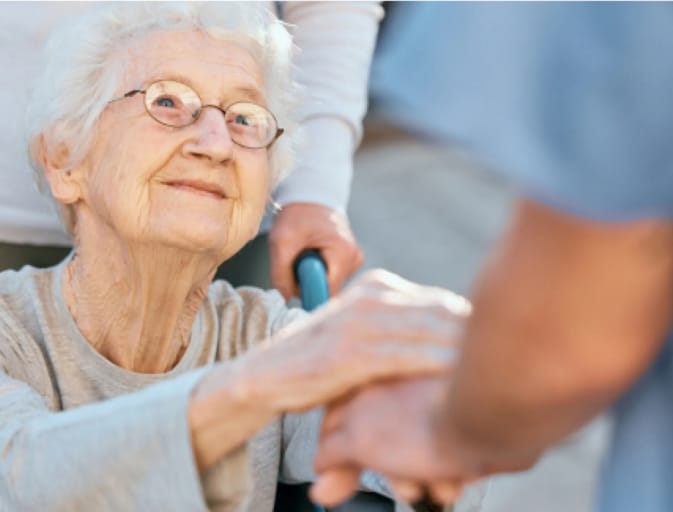Preventing Falls at Home can Greatly Improve Quality of Life

One of the largest barriers for an older adult to age at home is fall risk. As adult children, we understand that preventing falls can be the major difference between our parents living a happy, active life and being very limited in what they can and cannot do. The concern is backed by astounding statistics. According to the Journal of Geriatric Orthopaedic Surgery & Rehabilitation, it has been estimated that the mortality rate after a hip fracture is as high as 58% in the first year following the hip fracture. The mortality risk decreases significantly following the first 2 years, but does not return to prior levels.
These startling statistics bring to mind the importance of making sure our aging parents avoid falls at all costs. Unfortunately, falls in the older adult have come to be accepted as a normal part of the aging process. It is no wonder considering that the vast majority of falls occur in adults over the age of 65. However, it does not have to be this way.
Preventing falls does not have to be complicated. Starting early is key.
1. Preventing falls from ever occurring is the best way to prevent the serious ones. According to the National Osteoporosis Foundation, menopause is a significant factor in increasing the risk for osteoporosis and therefore, risk of falls and fractures. Naturally, as women reach the age of menopause, it is important for them to speak with their physician to begin early management of the aging process. To prevent osteoporosis, your physician will likely recommend a healthy diet, regular strength training, and perhaps medication.
Strength Training is Crucial in Preventing Falls
2. As one gets older, strength training becomes a crucial part of preventing falls. However, one must consider the factors that can prevent us from safely strength training such as chronic pain and cardiovascular diseases. Speaking with your primary care physician about beginning physical therapy can help you address this concern. A Doctor of Physical Therapy (DPT) will not only be a major supporter in preventing falls, but he/she will also be able to address your chronic pain, so that you can improve your strength and balance in a safe and efficient manner. This can be done in an outpatient clinic where you will have access to several resistance training tools.
Preventing Falls at Home
3. The older adult who leads an active lifestyle is not immune to accidents. In fact, the most common place for seniors to fall is in their home. As fall risk increases, initial action needs to be in home modification to assist in preventing falls at home. It is important to evaluate the environment in which a patient lives to ensure that their home is accessible and as safe as possible. Some modifications recommendations include:
- Carpet removal
- Grab bars
- Walk-in shower
- Night lights
- Clear walkways
This coupled with consistent in-home therapy helps make sure that the older adult can continue to live safely in their home and avoid accidents that can have serious consequences.
Hiring Home Care for the Difficult Tasks
4. Once it is apparent that the older adult can no longer safely perform daily chores and it has become to much of a burden for the family, it is time to hire a caregiver. Caregivers can reduce the risk of falls in the older adults by taking over tasks that are too difficult to perform for the older adult. This includes things like laundry, light cleaning, bathing, and errands that require driving. How many hours might they need?
A base number of hours to start with is 4 hours/day for 3-4 days/week. This will be enough to take care of the difficult tasks without being financially overwhelming. Often times, family members can divvy up the costs and ultimately save money by preventing the repercussions of a serious fall.
Around-The-Clock-Care
5. The most important aspect of preventing falls in the older adult is hiring a live-incaregiver. A home health company can provide a live-in caregiver, home physical and occupational therapy, as well as nursing services as needed. A live-in caregiver will provide close supervision in all activities as a backstop to fall prevention. The home health aide can also be in close contact with the DPT in order to ensure that the home exercises the patient is receiving continually reinforced.
With the proper resources and coordination of care under a primary care physician, falls can be prevented and do not have to be a normal part of aging. We hope that this information has been useful to you. If you are in need of our services, please feel free to contact us. We would be happy to help.


